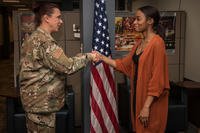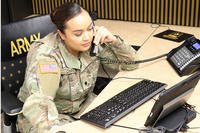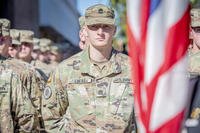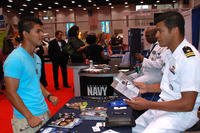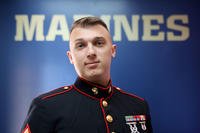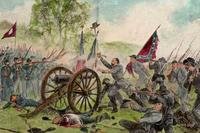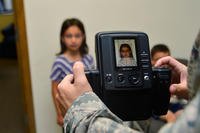What Is DEFCON?
DEFCON, short for Defense Readiness Condition or simply Defense Condition, is the U.S. military’s ranking system for defense readiness for a potential nuclear attack.
The system of ranking the perceived threat to national security was created during the Cold War, when fear of communism was at a high.
DEFCON 5 is in effect for the lowest perceived threat, while DEFCON 1 is the highest threat level and readiness for a state of war.
In 1959, when the DEFCON system was implemented, the Joint Chiefs of Staff explained in a memo: “A uniform system of progressive readiness is essential in insuring timely, accurate and clear direction of commands subordinate to the Joint Chiefs of Staff and in achieving greater effectiveness of U.S. forces in preparation for execution of contingency or emergency war plans. It will also assist in more rapid interpretation and evaluation of the readiness posture of the unified and specified commands.”
What Are the DEFCON Levels?
DEFCON 5
DEFCON 5 is “peacetime normal,” the default state of readiness for the United States military.
DEFCON 5 represents “a normal readiness posture which can be sustained indefinitely and which represents an optimum balance between the requirements of readiness and the routine training and equipping of forces for their primary mission,” according to a Joint Chiefs of Staff description of this level when the DEFCON system was first introduced.
The DEFCON 5 exercise term is “Fade Out.”
DEFCON 4
DEFCON 4 describes the everyday operating procedures for fighting units.
At DEFCON 4, the U.S. military complex ramps up intelligence gathering and shores up security.
DEFCON 4 represents “a readiness posture requiring increased intelligence watch and a continuing analysis of the political/military situation in the area of tension,” according to the original Joint Chiefs of Staff memo.
The DEFCON 4 exercise term is “Double Take.”
Most forces are usually at DEFCON 4 or 5.
DEFCON 3
Two steps from war, DEFCON 3 is generally seen as a standby level of alert, and it is the highest level of alert during peacetime.
DEFCON 3 represents “a readiness posture that requires certain portions of the assigned forces to assume an increased readiness posture above that of normal readiness,” according to the Joint Chiefs memo.
The DEFCON 3 exercise term is “Round House.”
At less-tense points during the Cuban Missile Crisis, various parts of the U.S. military were at DEFCON 3.
Over a decade later, in 1973, President Richard Nixon put the U.S. military on DEFCON 3 during the Yom Kippur War, as Moscow was reportedly preparing to launch an attack in the Middle East.
“DEFCON 3 did not put the military on a war footing,” according to an Associated Press article. “It primarily meant leaves were canceled, men were ordered to return to their units and preparations were made to move them out if necessary.”
DEFCON 2
DEFCON 2, one step from nuclear war, is implemented when an enemy attack is expected. Troops are poised for combat at this time.
DEFCON 2 represents “a readiness posture requiring a further increase in military force readiness which is less than maximum readiness; certain military deployments and selected civil actions may be necessary in consonance with the command’s mission,” according to the Joint Chiefs memo.
During this stage, the U.S. will have “subs at sea and the bombers waiting on the runways,” as described by Roger Molander, a nuclear protest leader, in a 1984 column.
Parts of the U.S. military were at DEFCON 2 during the Cuban Missile Crisis of 1962, the closest the world ever came to nuclear war.
The DEFCON 2 exercise term is “Fast Pace.”
DEFCON 1
The most urgent alert, DEFCON 1, represents the highest level of readiness for nuclear war.
DEFCON 1 would be reserved for when an attack is perceived as imminent or already under way – when the nation’s forces are engaged in full-on war mode.
DEFCON 1 represents “a maximum readiness posture requiring the highest state of preparedness to execute war plans,” the Joint Chiefs memo says.
The United States has never been at DEFCON 1 – at least not to the public’s knowledge – since the system began.
The DEFCON 1 exercise term is “Cocked Pistol.”
Read More: Force Protection Condition Levels (FPCON)
Is the DEFCON Level Public?
For security reasons, the U.S. military never publicly releases the current DEFCON level. In February 2022, a senior official with the U.S. Department of Defense confirmed that the federal government will not publicly reveal the current DEFCON level of the U.S. military.
As of January 2023, the current DEFCON level is estimated to be at 3 due to the Russian conflict, according to OSINT (Open Source Intelligence) on the website DefconLevel.com.
What Is the Highest DEFCON Level Ever Reached?
The U.S. elevated the Strategic Air Command to DEFCON 2 during the Cuban Missile Crisis of 1962.
It was the highest DEFCON level reached so far by the U.S. military.
At a level unknown to most of the American public, the United States was on the brink of a nuclear war that would have destroyed civilization as we know it.
This U.S. decision to escalate Strategic Air Command to DEFCON 2 was a response to a threat by Soviet leader Nikita Khrushchev.
Read More: How One Black Bear Almost Set Off World War III During the Cold War
“B-52 bombers were placed on continuous airborne alert, reservists were recalled and the U.S. nuclear arsenal was put on alert status,” Military.com reporter Blake Stilwell writes in “The First Recipient of the Air Force Cross Was the Only Casualty of the Cuban Missile Crisis.”
“A chilling example of how mankind could stumble stupidly into atomic war,” columnist Charles Whited opined 25 years later.
“A battle of blunders,” summarized McGeorge "Mac" Bundy, who was serving as national security adviser at the time to President John F. Kennedy.






